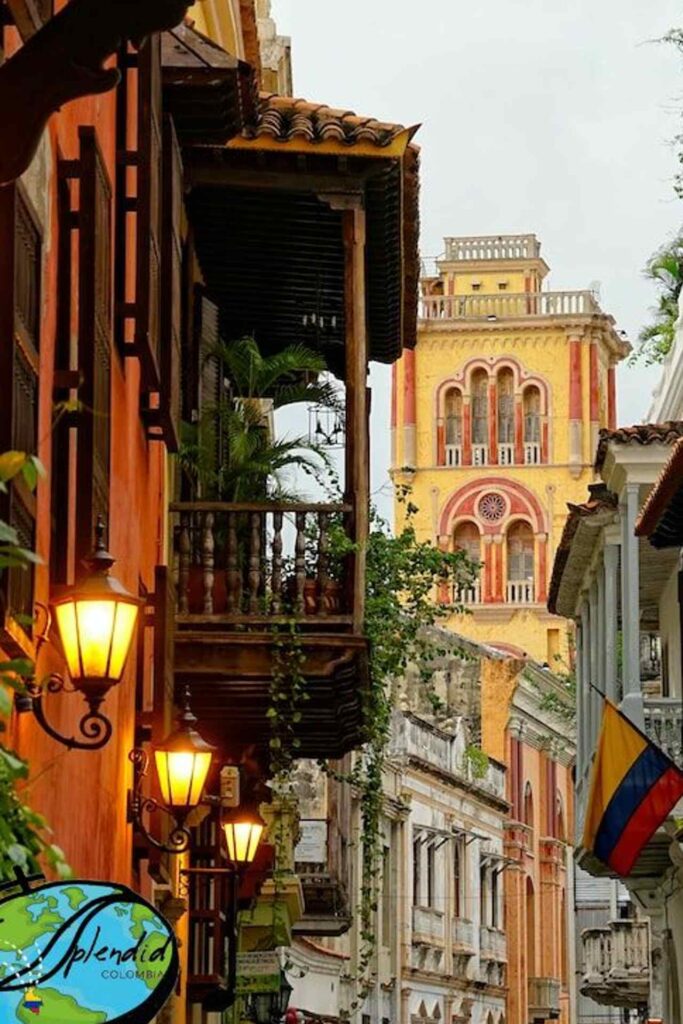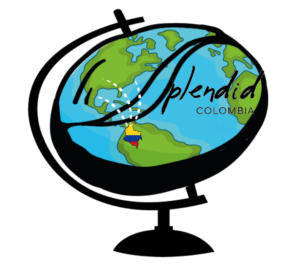The history of Cartagena on this occasion takes us back to its independence, which took place over a period of ten years starting on November 11, 1811.
History of Cartagena de Indias
For more than 275 years, Cartagena was under Spanish rule. With Napoleon’s imprisonment of Charles IV and Ferdinand VII, and the start of the Peninsular War, the Latin American wars of independence soon followed. In Cartagena, on 4 June 1810, Royal Commissioner Antonio Villavicencio and the Cartagena City Council banished the Spanish Governor Francisco de Montes on suspicions of sympathy for the French emperor and the French occupation forces which overthrew the king. A Supreme Junta was formed, along with two political parties, one led by Jose Maria Garcia de Toledo representing the aristocrats, and a second led by Gabriel and German Piñeres representing the common people of Getsemani. Finally, on 11 November, a Declaration of Independence was signed proclaiming “a free state, sovereign and independent of all domination and servitude to any power on Earth”. The support for a declaration of independence by working class leader and artisan Pedro Romero was key in pushing the Junta to adopting it.
Spain’s reaction was to send a “pacifying expedition” under the command of Pablo Morillo, The Pacifier, and Pascual de Enrile, which included 59 ships, and 10,612 men. The city was placed under siege on 22 August 1815. The city was defended by 3000 men, 360 cannons, and 8 ships plus ancillary small watercraft, under the command of Manuel del Castillo y Rada and Juan N. Enslava. However, by that time, the city was under the rule of the Garcia de Toledo Party, having exiled German and Gabriel Piñeres, and Simon Bolivar. By 5 December, about 300 people per day died from hunger or disease, forcing 2000 to flee on vessels provided by the French mercenary Louis Aury. By that time, 6000 had died. Morillo, in retaliation after entering the city, shot nine of the rebel leaders on 24 February 1816, at what is now known as the Camellon de los Martires. These included José María García de Toledo and Manuel del Castillo y Rada.
Finally, a patriot army led by General Mariano Montilla, supported by Admiral José Prudencio Padilla, laid siege to the city from August 1820 until October 1821. A key engagement was the destruction of almost all of the royalist ships anchored on Getsemani Island on 24 June 1821. After Governor Gabriel Torres surrendered, Simon Bolivar the Liberator, bestowed the title “Heroic City” onto Cartagena. The Liberator spent 18 days in the city from 20 to 28 July 1827, staying in the Government Palace in Proclamation Square and the guest of a banquet hosted by Jose Padilla at his residence on Calle Larga.

Unfortunately, the toll of war, in particular from Morillo’s siege long affected the city. With the loss of the funds it had received as the main colonial military outpost, and the loss of population, the city deteriorated. It suffered a long decline in the aftermath of independence, and was largely neglected by the central government in Bogotá. In fact, its population did not reach pre-1811 numbers until the start of the 20th century.
These declines were also due to disease, including a devastating cholera epidemic in 1849. The Canal del Dique that connected it to the Magdalena River also filled with silt, leading to a drastic reduction in the amount of international trade. The rise of the port of Barranquilla only compounded the decline in trade. During the presidency of Rafael Nuñez, who was a Cartagena native, the central government finally invested in a railroad and other infrastructure improvements and modernization that helped the city to recover.
Hispanic Period
Cartagena’s independence took place over a period of ten years, starting on November 11, 1811, the date on which the city declared its absolute independence from Spain, becoming the first territory of present-day Colombia to declare itself fully independent, as well as the second city in South America, after Caracas, Venezuela. It should be noted that the temporal extension of these events coincides with the period of greatest importance for the sovereign destiny of the then American provinces.
Contemporary period
Cartagena de Indias preserved the customs and traditions inherited from the time when it belonged to the Spanish empire. Society tended to be divided into well-defined castes. The metropolis remained the model. The growing number of high foreign officials arriving in the city exerted an important influence on the customs of the coast.
Competition for maritime supremacy
The port par excellence during the Colony was Cartagena, although Santa Marta always tried to dispute the monopoly. Both ports were equidistant, Santa Marta to the north and Cartagena to the south, from the Magdalena River, the main waterway of communication with the interior, if not the only way; they were not able to effectively distribute the import and export cargoes through this river. This is when the small and open port of Sabanilla, at a very short distance from Barranquilla and therefore from the Magdalena River, entered the fight for the monopoly.
In 1830 the competition with Sabanilla began, the Samarios resented it and asked the congress to close this port. Santa Marta showed greater movement of ships, with 137, of which 68 were foreigners. All this took place within what was still called Gran Colombia.
At the beginning of the 1940s, although Cartagena’s total trade was large, imports through the port of Santa Marta had surpassed those of Cartagena; but Sabanilla had greater exports than Santa Marta; and after 1845 Cartagena could not recover its position as the main port.
Thus, while Cartagena declined, Santa Marta became the preferred port of the Neogranadinos thanks to the creation of the Vapores company in 1846, which with small steamships marketed on the Magdalena River.
The Cartageneros, desperate for the disaster that was coming, thought of developing several projects to save their port, such as dredging the Bocachica channel to receive ships of greater draft; opening a channel in Bocagrande, destroying the breakwater built by Antonio Arévalo; creating a port to reactivate navigation through the dike channel, but none of this was carried out until 1850 when this old channel, opened in 1651, was adapted, but in 1852 it was again obstructed by sedimentation.
By 1842, the government authorized Sabanilla as a parallel port. Due to this decision, more foreigners arrived in Barranquilla, to the point that in 1849 there were thirteen trading houses in that city, of which eight were foreign, and in the same year there were eighteen trading houses in New Granada; seven in Barranquilla, six in Bogotá, three in Cartagena and two in Santa Marta.
War of the Supremes
The civil war of 1840, called the War of the Supremes, affected the routes that allowed the arrival of merchandise to Cartagena, thus preventing the main function of the port, which increased the difficult situation it had been going through.
Cartagena did not have a good position in the war because its “leaders” lacked a unified command, and were defeated by Generals Tomás Cipriano de Mosquera and Pedro Herrán.
The scourge of war touched Cartagena, which for a time was in the power of the anti-government force, and in October 1841 was under the new control of the constitutional faction, in danger of being attacked by the rebel flotilla that, from the Gulf of Morrosquillo, presented itself to attack Cartagena under the command of Lieutenant José Antonio Padilla, Veteran of Maracaibo, brother of the admiral and who had been integrated to the navy since 1833.
The ineffective strategy of the insurgent troops and the bad disposition of the government would plunge Cartagena into economic misery, preventing the entry of exports and imports. Faced with this, the British government supported by the government troops, produced a decisive encounter in the Bay of Cispatá on November 19, 1841, producing 59 dead, 23 wounded, and nearly 200 prisoners, causing a great revolt among the civilian population of Cartagena, which would lead General Tomas Cipriano de Mosquera to suppress what was left of the navy.
After the war
By 1843 and 1844, after the end of the war, the Cartageneros turned their eyes to some projects that the city had been working on for some years. They thought of converting their port and their walled city into a free trade zone, a Free Trade Zone. The idea of the Cartageneros was to create a free port so that foreign merchants could unload their warehouses and stores in Cartagena without paying customs duties. With this the trip to the Grenadian merchants abroad, which was costly and full of dangers with advantages for all, was economized, but it was a failure.
The rest of the century the life of the country passed in a succession of confrontations between Bolivarians and Santanderists; artisans and free traders; conservatives and liberals; federalists and centralists; landowners, slaves and sharecroppers; clerics and radicals, which gave rise to a string of civil conflicts.
Since 1950
In the 1950’s Cartagena began its renaissance. Navigation on the Canal del Dique was reestablished after it was restructured for the permanent service of the city in 1952.1 The Mamonal pipeline from Barrancabermeja initiated an economic reactivation thanks to the petrochemical industry. Later, the Troncal de Occidente, which transports most of the merchandise that enters and leaves the port of Cartagena from and to the interior of the country, began operating.2
Thus, the city became an important seaport for national commerce, competing with Barranquilla.3 The flourishing of tourism expanded the possibilities of progress for Cartagena de Indias, leading to the valorization of its historic center, which was declared a National Monument in 1959, and the port, fortresses and monumental complex of Cartagena, which has been a World Heritage Site since 1984.
Splendid Colombia
We gladly invite you to check other interesting news:
